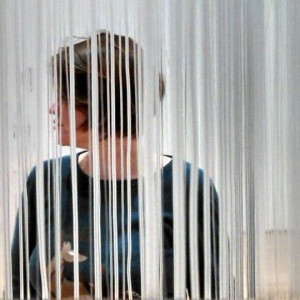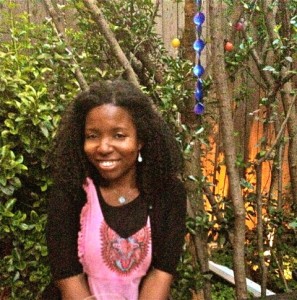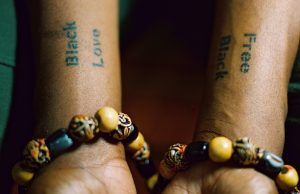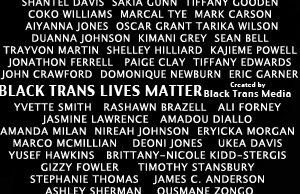Poetry by Honorable Mention finalists Shevaun Brannigan, Coco Owen, and Kimberly Reyes
2 poems by Shevaun Brannigan
.
In Response to Learning the Lego Line of Female Scientists was Limited Edition
On the line of female Legos that will continue to be produced: “In a sad and metaphorical twist, the male [Lego figurines] can drive cars, run, and hold tools. The female minidolls can’t move their hands. They can only sit, stand, or bend over.”—Avivah Winnerberg-Cox
Be a gracious girl. Thank them
for the thumb, dumb dumb.
I was a single niche market
as a child. Do you want to see
my single niche? I can
bend over. A knee,
a stove, a bed. Maybe
I would be better
at driving if I could
move my hands.
Women make bad drivers
in their wombs.
Do you want to make
a bad driver with me?
I can bend over.
Women are driven
places. Women are driven
by sex, that is, chauffeurs,
Lego makes a chauffeur
you can tell by the hat.
Anyone can be made a woman
by taking away their job,
that is, hat, and replacing it
with a ponytail. A woman
with a mustache is something
to laugh at. I’m pretty funny
until I bleach.
I can be a stand-up comedian
for Halloween, I just have to
put on a hat.
Do you want to come
see me perform?
I won’t tell jokes
about periods, that is,
punctuation, I’ve been told not to
and I’m not one to question Mark.
If I’m not a stand-up,
remember, I can bend over.
Sometimes I even have
breasts. Your hands can hold
tools, will you lay my pipe?
And my drain is clogged
in my pink kitchen, and I want
to stand in front of the sink,
they were nice enough
to give me shoes.
House
It was intrigue enough—
a cord hanging from the ceiling
only grandfather was tall
enough to pull and reveal
the attic steps. Even
as my girl-cousins and I giggled
our way up the stairs, crouching,
a sugar cube each
melting in our mouths,
I wanted to know the strength
of bringing down a ceiling
with one hand. But the attic,
sloping, unfinished, belonged to us,
on our hands and knees, crawling
from beam to exposed beam
to reach Grandmother’s dollhouse.
Bisected and tin, three stories
to lose ourselves in, we began
to place the props. We put the baby
in the pram, pushed him through
the kitchen and back again.
Left the mother in the box.
Passed out the plastic blocks
of twin beds and vanity,
distributed the child dolls around,
wound the grandfather clock.
Nothing outlasted
the ticking. My grandparents
have died, my cousins grown.
Each of them has their families
and homes. In a basement,
the dollhouse’s doors
stick shut. On my desk
rest two tiny chairs. A miniature pot.
Above me, the ceiling and
its cracks run through.
I cannot reach high enough
to rip this house in two.
 Shevaun Brannigan is a graduate of the Bennington Writing Seminars, as well as The Jimenez-Porter Writers’ House at The University of Maryland. She has had poems appear in such journals as Best New Poets 2012, Lumina, Rhino, Court Green, and Free State Review. Her favorite poetry gig is the workshop she leads at her local Domestic Violence Shelter.
Shevaun Brannigan is a graduate of the Bennington Writing Seminars, as well as The Jimenez-Porter Writers’ House at The University of Maryland. She has had poems appear in such journals as Best New Poets 2012, Lumina, Rhino, Court Green, and Free State Review. Her favorite poetry gig is the workshop she leads at her local Domestic Violence Shelter.
3 poems by Coco Owen
Whor led
Who se are you, girl? Who se whor led
i mage, who se ho pe, who se pre text,
who se m aid, who se p lay thing?
Who put t he w ho rls in y our inn ards
and cochlea? Who se aph rod isiac oyster,
fig, pome granate, or o range are you?
Dear m aid en— H ow long t ill you’re h is
It girl? Is it a whirl win d ro man ce,
m ail-order or ar ran ged? Girl, you are a naught y,
man y- chamber ed nautil us, and who‘re we
kid ding? You can gr ow up to be any thing;
but all ways a virg in al thing he’s d reaming.
Quiver
T his
la mentation’s
sor row full dirge
is th inking reth inking
it self. La mentation h as but
j us t de art hs f or nourish men t,
f or a racist nation is lamest
when lite racy de faults into
…………….Weapons-grade in come inequality.
First came t he arms r ace, then
there we re t he war s urges,
t he orange t error alerts &
the scandalo us state-security
obf us cation. That’s w he n
I put my form erly in-
war d la men ts out
of t heir misery,
anti militarily.
The Feminine Anemone, definition of—
—A marine organism which attaches to rocks. A Wallflower with petal- or tentacle-like appendages laden with poison: Ornament as armament.
—In the juvenile phase, often encounters violence and predation, c.f., the ‘She Asked For It,’ Jailbait or Cocktease anemones.
—The young anemone is called a Living-doll, or Nymph—short for Nymphomaniac—when it is feeding.
— Demonstrates a stick-to-it-iveness usually called Clingy.
—When damaged by passing boats, storms or divers, is said to suffer from Feminine Masochism, i.e., it is a Victim.
—Employs stinging nematocysts as self-protection when disturbed. This feminine anemone behavior is called Hysterical or Bitchy. (See also, Vagina dentata.)
—Can self-beget: its hundred Kali arms can regenerate if cut off.
—Of, or related to, Home-wreckers, Old Maids, Southern Belles, Sluts, Starlets and Goody-two-shoes. Also, Home-maker, Home-schooler, Angel in-the-house.
—May be found in the tide-bed she’s Stay-at-home to.
—May also be found in deep water. Is then referred to as Self-effacing, Depressed, or Passive-Aggressive.
—This coelenterate, though all-orifice, can be Frigid.
—Beguiling but deceitful, the feminine anemone has been called a “sea/Sweetheart, that Kleptomaniac.” (See “Lesbos” by Sylvia Plath. Italics added.)
—Also, often Beard for a clownfish. (See also, Fag Hag.)
—The Eve anemone attracts poisonous sea snakes and is responsible for much destruction of reef ecosystems.
—Persistent Co-dependent devotion to a given rock or clod shows a Submissiveness typical of the Persephone anemone (a style of Girl still in Vogue).
—As a juvenile, the Madonna anemone is ‘Like a virgin’ and revered.
—After sexual maturity, the Madonna anemone is referred to as Loose Woman, or simply, Whore.
—When it remains attached to one rocky bed, the feminine anemone is known as the Honest Woman, Fixèd Foot, or Ball-and-Chain.
—When the feminine anemone moves (however slowly) between attachment sites, it is called a Promiscuous Bitch.
—The feminine anemone’s flower-like appearance disguises the fact that it is a predator. Therefore, anemones are sometimes referred to as Black Widows, Ball-busters or Man-killers in the literature.
—When the anemone gesticulates with its tentacles, it is called Women’s Libber. However, the gesture may also signify a distressed organism (Cf., the Stevie Smith “not waving but drowning” anemone.)
—A high incidence of eating disorders may reflect the feast-or-famine conditions in which anemones exist. Anemones without adequate nutrition are anorexic or Karen Carpenters (slang).
—Where feminine anemones congregate, the habitat is called a Nunnery, the type of place the suicidal Ophelia anemone got off to.
—At the end of the life-cycle, the anemone is called Old Hag, Cow, or Shrew, i.e., she is no longer a Nice Piece of Ass and is of no further interest.
 Coco Owen is a stay-at-home poet in Los Angeles. She has published poems in the Antioch Review, 1913,The Journal, Rio Grande Review, Cirque and CutBank, among other venues. She has an M.A. in comparative literature and Ph.D. in clinical psychology. Owen serves on the board of the independent, feminist publisher, Les Figues Press, in Los Angeles, and more of her work can be found at:www.cocoowenphd.com.
Coco Owen is a stay-at-home poet in Los Angeles. She has published poems in the Antioch Review, 1913,The Journal, Rio Grande Review, Cirque and CutBank, among other venues. She has an M.A. in comparative literature and Ph.D. in clinical psychology. Owen serves on the board of the independent, feminist publisher, Les Figues Press, in Los Angeles, and more of her work can be found at:www.cocoowenphd.com.
3 poems by Kimberly Reyes
The Weigh In
Brooklyn, Winter, 2009. (170 pounds): Jordan, Lebanese American, wears disdain for convention, courtship. On his nape, snaking up his face: A clear python swallowing a black teardrop. Inked in prison. He can only meet at night. On sticky Lower East Side bar stools. Under his stubble. His unwashed sheets. Bad boy fantasy. Boston Southie. All Adam’s apple, he coos: I beat off thinking about you yesterday. I even told my boys about your body. (Wow!) You‘re flattered. Flabbergasted. You even get Fridays. (But how? Well. It is always dark.)
Connecticut, Summer, 2010. (-32): Chris, White American, pulls out chairs, opens doors. Tall. Finally makes you feel like a woman, a girl. Especially when he bends down. Shouts at you. At home. Outside cafes. (Outside. With you!) He picks up the tab. Holds your hand. Admires how even your wrists are tiny. He talks of exes. Constantly. You meet one. Exotic (and pretty, she was pretty right? You hope pretty is his type): petite, Puerto Rican and Chinese. But she gained weight. His disapproval. His head shake. He finds you between leap years. He loves that you’re not the type to let yourself go.
Harlem, Fall, 2012. (+21): Michael, Black American, talks over you in African American studies. Fixes his stare after class. A drink, perhaps? Still, you’re the clueless voice of the middle class. He asks you for singles to tip the bathroom attendant. He’s teaching. He’s light-skinned. You call him mini-Barack. But he’s louder. Down-er. Explains his role in the struggle: Dating girls browner than he desires. Browner, even than you to suppress his white supremacist thoughts. (This is a compliment? Yes!) This is the compliment you take.
Cape Town, Winter, 2013. (Holding.): Rudy, Colored South African, reminds: You’re not mixed, like us. Coiled blonde dreadlock brushing his chubby arm. He’s right. Righteous. The ocean never obscured his view. He shows you dusty townships. Shaded cafes of the DNC rich. You run into his old classmate at the mall. Her name he can’t recall. He used to play with Black girls. Just not an African-American. (Perform Michelle. An opening. A way in!) His Colored girlfriend shows up at happy hour. Small, curly, curvy and caramel. Still, it’s hours before he introduces you. You appreciate everything the hyphen can erase.
Chicago, Summer, 2013. (Stuck): Romeo, White Italian, covers your escaping thoughts with toothy kisses. Broken-English babble of Cappuccino babies. He texts pictures of pink roses and his penis. But language is not the barrier. He’s short. You rebuff invitations to The Navy Pier. Going out. Playing house, one glass. You’re always halfway through the wine before the doorbell rings. Fermenting saliva. Salt. Rubber and worry: His expiring visa. His last chance. (Yours.) He strokes your skin, searches for fluency, just like Serena Williams.
The Dance
I met my messenger in a third grade classroom. Her name was Jenifer, with one “n.” No beleaguering, repetition. No time. She had advanced leukemia. The childhood one. Whatever that means. And he held my hand as our parents whispered. The “C” word, her older brother. Chris. He flashed like Saturday morning cartoons. I didn’t know any teenage boys who weren’t my cousins. And he didn’t look like any of them. And my heart beat quick, bushy vibrations on his parents’ brown velvet couch. That day. Beside him. My tongue hung heavy and loose inside a mouth I kept trying to shut. And my wet and shifty palms collapsed as he slid three fingers into the heat of one.
I remember embarrassment:
Did he mean to do that? Did I look like a girl? There, on the couch. All of my friends were boys, and we never talked about it.
I remember fear:
Not for the Reaper in the room, the one we all saw, but for the Fates that awakened then, in my sweat, dancing over.
I remember Jenifer’s big, grainy eyes, rapt under her thinning blond hair. On me. I wonder if she knew what started on that couch, in that orange living room. If she knew who I’d morph into when my palms got slick. Who I’d remain for all her lost seasons to come. Those eyes. The measured heat. As if telling me, on her way out, in her transfixed calm, that the setting sun is always warmer than its rising. Whispering to wait. In line, behind the blithe lilies. It’d be a while before I could hold a hand and look up. I was going to be the last flower to bloom.
Cape Town, Winter 2013
“I have some black family
members,” he says.
Cruel, coiled, pencil-holding
dreadlock brushing his
nude crayon-colored tan
shoulder betrays his/
fantastically elevated
/subtracted standing.
His girlfriend has straight
hair, speaks Afrikaans,
slips that she’s better than Africans.
She’s a proper Colored girl.
She corroborates his space.
I no longer know mine
in the cradle of civilization.
Here I thought we were all Cosby kids.
Air, hemispheres change
I stay. Come home to:
Zoe playing Nina,
Lolo mocking Rachel,
Madea she says.
Medea answers:
Catfish in a
barrel full of spite and promises
of the golden fleece;
they have black family members too.
 Kimberly Reyes is a second-generation NYer living in California and has written for the Associated Press, Entertainment Weekly, Time.com, The New York Post, The Village Voice, Alternative Press, ESPN the Magazine, Jane, Honey, NY1 News andThe Best American Poetry blog. She received an M.A. from Columbia University’s Graduate School of Journalism in 2013. After that she was a post-graduate journalism fellow at the Poetry Foundation, a Callaloo fellow and is currently a William Dickey Fellow at San Francisco State University where she’s an M.F.A. candidate in poetry.
Kimberly Reyes is a second-generation NYer living in California and has written for the Associated Press, Entertainment Weekly, Time.com, The New York Post, The Village Voice, Alternative Press, ESPN the Magazine, Jane, Honey, NY1 News andThe Best American Poetry blog. She received an M.A. from Columbia University’s Graduate School of Journalism in 2013. After that she was a post-graduate journalism fellow at the Poetry Foundation, a Callaloo fellow and is currently a William Dickey Fellow at San Francisco State University where she’s an M.F.A. candidate in poetry.




Pingback: Two Updates | Shevaun Brannigan